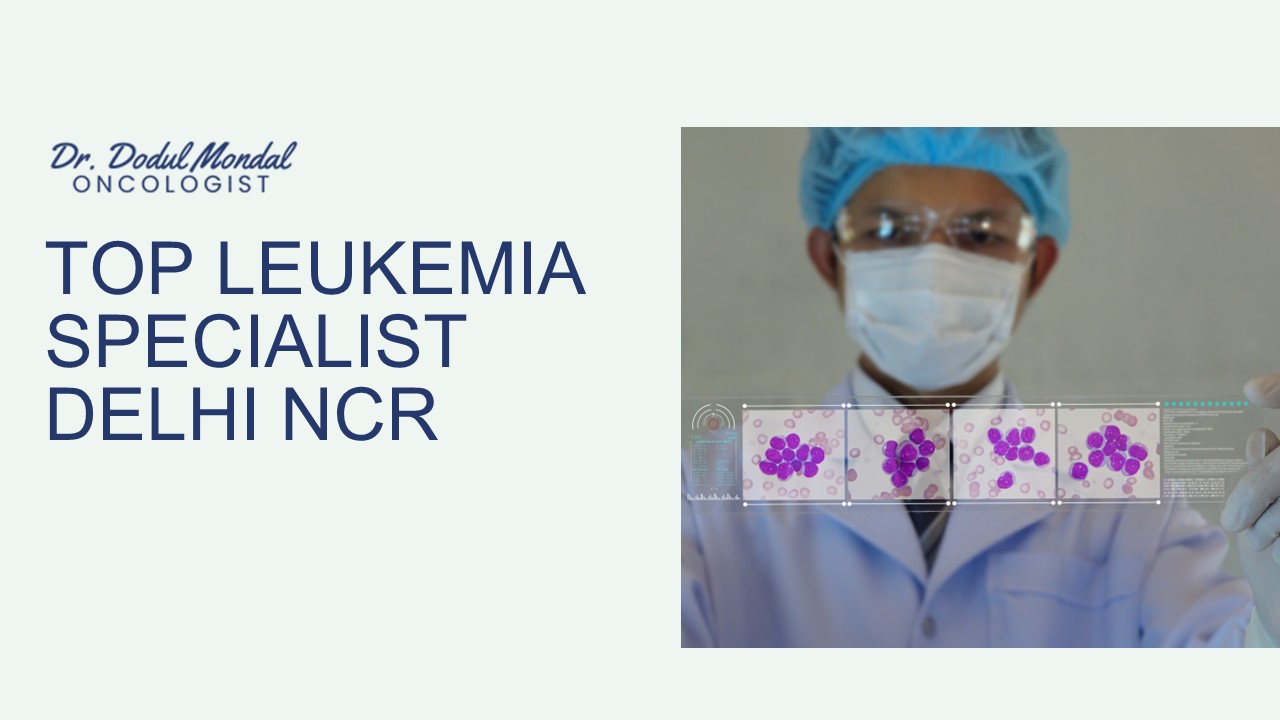Top Leukemia Specialist Delhi NCR - PowerPoint PPT Presentation
Title:
Top Leukemia Specialist Delhi NCR
Description:
Leukemia is cancer of blood cells. There are several types of blood cells, including red blood cells (RBC), white blood cells (WBC) and platelets. Generally, leukemia refers to cancer of white blood cells. – PowerPoint PPT presentation
Number of Views:2
Title: Top Leukemia Specialist Delhi NCR
1
TOP LEUKEMIA SPECIALIST DELHI NCR
2
EVERYTHING YOU NEED TO KNOW ABOUT LEUKEMIA
Leukemia is cancer of blood cells. There are
several types of blood cells, including red blood
cells (RBC), white blood cells (WBC) and
platelets. Generally, leukemia refers to cancer
of white blood cells.
3
RISK FACTORS FOR LEUKEMIA
- The cause of leukemia is unclear. However, some
factors that may increase risk have been
identified. These include - Family history of leukemia
- Smoking increases the risk of acute myeloid
leukemia (AML) - Down syndrome and other genetic diseases
- Blood diseases, such as myelodysplastic syndrome,
sometimes called pre-leukemia - Previous methods of using chemotherapy or
radiation to treat cancer - Exposure to high levels of radiation
- Exposure to chemicals such as benzene
4
TYPES OF LEUKEMIA
The onset of leukemia can be acute (sudden onset)
or chronic (slow onset). In acute leukemia,
cancer cells multiply rapidly. In chronic
leukemia, the disease progresses slowly, and
early symptoms may be very mild.
5
Acute Myelogenous Leukemia (AML) Acute
myelogenous leukemia (AML) can occur in children
and adults. According to the National Cancer
Institute (NCI) surveillance, epidemiology, and
final results program, approximately 21,000 new
cases of AML are diagnosed in the United States
each year. This is the most common form of
leukemia. The five-year survival rate for AML is
26.9. Acute Lymphoblastic Leukemia (ALL) Acute
lymphocytic leukemia (ALL) mostly occurs in
children. NCI estimates that approximately 6,000
new cases are diagnosed each year. The five-year
survival rate for ALL is 68.2. Chronic Myeloid
Leukemia (CML) Chronic myelogenous leukemia (CML)
mainly affects adults. According to NCI data,
approximately 9,000 new CML cases are diagnosed
each year. The five-year survival rate of CML is
66.9.
6
Chronic Lymphocytic Leukemia (CLL) Chronic
lymphocytic leukemia (CLL) is most likely to
affect people over 55 years of age. Rarely seen
in children. According to NCI, approximately
20,000 new cases of CLL are diagnosed each year.
The five-year survival rate for CLL is
83.2. Hairy cell leukemia is a very rare
subtype of CLL. Its name comes from the
appearance of cancer cells under the microscope.
7
WHAT ARE THE SYMPTOMS OF LEUKEMIA? Symptoms of
leukemia include
- Excessive sweating, especially at night (called
night sweats) - Fatigue and weakness cannot go away with rest
- Unexpected weight loss
- Bone pain and tenderness
- Painless, swollen lymph nodes (especially in the
neck and armpits) - Enlarged liver or spleen
- Red spots on the skin called petechiae
- Bleed easily and bruise easily
- Fever or chills
- Frequent infections
8
LEUKEMIA CAN ALSO SPREAD TO OTHER PARTS OF THE
BODY, INCLUDING
- Lung
- Gastrointestinal tract
- Heart
- Kidney
- Testis
- Diagnosing leukemia
9
TREAT LEUKEMIA
Leukemia is usually treated by a
haematologist-oncologist. These are doctors who
specialize in blood diseases and cancer. The
treatment method depends on the type and stage of
the cancer. Some forms of leukemia grow slowly
and do not require immediate treatment. However,
the treatment of leukemia usually involves one or
more of the following 1. Chemotherapy uses drugs
to kill leukemia cells. Depending on the type of
leukemia, you can take a single drug or a
combination of different drugs. 2. Radiotherapy
uses high-energy radiation to destroy leukemia
cells and inhibit their growth. Radiation can be
applied to specific areas or the entire body.
10
LONG-TERM OUTLOOK
The long-term outlook of leukemia patients
depends on the type of cancer they have and the
stage of diagnosis. The sooner leukemia is
diagnosed and treated, the better the chance of
recovery. Certain factors (such as age, past
history of blood disorders, and chromosomal
mutations) can negatively affect the
outlook. According to NCI data, from 2005 to
2014, the number of leukemia deaths fell by an
average of 1 every year. From 2007 to 2013, the
five-year survival rate (or the percentage of
survival five years after being diagnosed) was
60.6. .
11
Chronic Lymphocytic Leukemia (CLL) Chronic
lymphocytic leukemia (CLL) is most likely to
affect people over 55 years of age. Rarely seen
in children. According to NCI, approximately
20,000 new cases of CLL are diagnosed each year.
The five-year survival rate for CLL is
83.2. Hairy cell leukemia is a very rare
subtype of CLL. Its name comes from the
appearance of cancer cells under the microscope.
12
THANK YOU
oncologistdrdodulmondal.com
Associate Director Max Super Specialty Hospital,
Saket, New Delhi Oncology/Radiation Oncology
91-8860102093
dodulmondal_at_gmail.com
BOOK YOUR APPOINTMENT
08860102093































